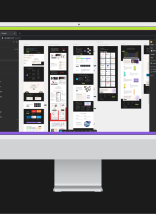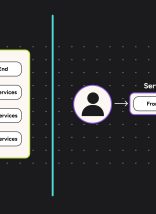Recently, InternetRetailer.com released their annual “Internet Retailer Mobile 500” report which examines the trends impacting the top 500 online retailers. The study found that by the end of 2014, sales that take place on smartphone and tablet devices– known as mCommerce– will approach $84 billion and represent about 21% of all online sales for these 500 retailers. Not to be outdone, research firm Forrester is projecting mCommerce to total 4 billion in the U.S. by the end of this year.
$84 billion or $114 billion: either way you slice it, that’s a lot of transactions and a tremendous amount of revenue. So the critical question to ask: is your business ready for mCommerce? In this post, we’ll show you what you need to do to get your business ready for an mCommerce environment.
Is mCommerce Right for Your Business?
Just because mCommerce is growing at a rapid rate doesn’t mean that you need to rush right out and get ready for mobile shoppers. In some instances, your customers may not be ready to make the jump to buying from you on mobile devices. If that’s the case, you’ll be better off applying your marketing and development dollars to other, more effective areas. But, you may ask, how can you tell if it is time to make the jump to mCommerce? Consider the following:
How much mobile traffic do you get today? A great place to start is to open up your Web analytics and take a look at how much traffic your Web site currently receive from mobile sources such as tablets and smartphones. Tools such as Google Analytics do a good job of breaking out this data so you can easily answer this question. Look at that traffic. Is it growing over time? Has it risen to what you would consider a significant level? Just having mobile traffic isn’t enough, so you’ll need to go one step further. Segment your mobile traffic and look at it for sales to see if you have any visitors currently trying to purchase from you on mobile devices. Are you finding any attempts? Is it growing over time? If so, you may have an audience that is ready to buy from you on mobile devices.
Are your products/services a good fit for mobile devices? Would a reasonable person expect to be able to make a purchase from you on a mobile device? I recommend taking a dispassionate look at what you sell and try to make a purchase on a mobile device. Does it work? Would it make sense to complete the transaction that way? There’s a big difference between purchasing a book on a mobile device and trying to complete the purchase of a car via your smartphone.
What are your competitors doing? Like any good business, you probably have a handle on what your competitors are doing. Take a look at their site. Can you purchase from them on a mobile device? Do they use dedicated mobile apps? Do they have a responsive designed site that makes it easy to buy using a smartphone or tablet? If your competitors are already inching toward mCommerce, chances are you will need to also.
3 Steps to Getting Started with mCommerce
So, you’ve looked around, checked the data and it seems like mCommerce is a good fit with what you sell online. The next critical question: how do you get started with mCommerce? Let’s take a look at three key steps to getting started with mCommerce.
1. Mobile app or responsive Web site? Mobile apps are great for specific types of purchases such as booking and paying for a hotel reservation. In this instance you’ll need to make certain that the app framework will work well with your eCommerce platform. On the other hand, if you have a large product catalog, a responsive Web site might be a better fit.
2. Involve a good user experience (UX) designer to create a focused design. Good design is important to creating a buying experience that will lead to conversions (sales). Whether you create a mobile app or a responsive site design, working with a UX designer can help you eliminate unnecessary design elements and clutter from the overall design. This creates a more focused experience for the buyer and provides a clear path to purchase.
3. Get ready to measure your efforts. One of the best things about digital marketing is that you can measure your efforts. MCommerce is no exception. Prior to going live with your mCommerce offerings, you’ll need to develop a marketing analytics strategy that is focused on what you need to measure to evaluate success. Your mCommerce analytics strategy should be able to help you identify what parts of the mobile environment create the best results (sales). This data can be used as part of an ongoing effort to fine tune your digital marketing efforts to drive more mCommerce sales.
Take the Next Step with mCommerce
As you can see, mCommerce is an area with a lot of potential. And while many of the traditional concepts of digital marketing are applicable to mCommerce, there are a few specific considerations you’ll want to pay attention to as you explore this for your business. Atlantic BT has helped many leading companies create and establish their eCommerce presence, including mCommerce. Contact our consulting team today to learn more about how we can help you capitalize on this growing avenue.
About Jon Parks
Jon Parks is Director of Marketing with Atlantic BT. In his work with Atlantic BT and through the digital marketing consultancy, Dijital Farm, Jon has experience helping companies develop digital marketing strategies to achieve their online marketing goals. You can follow Jon on Twitter (@jonparks), circle him on Google Plus or connect with him on LinkedIn.






